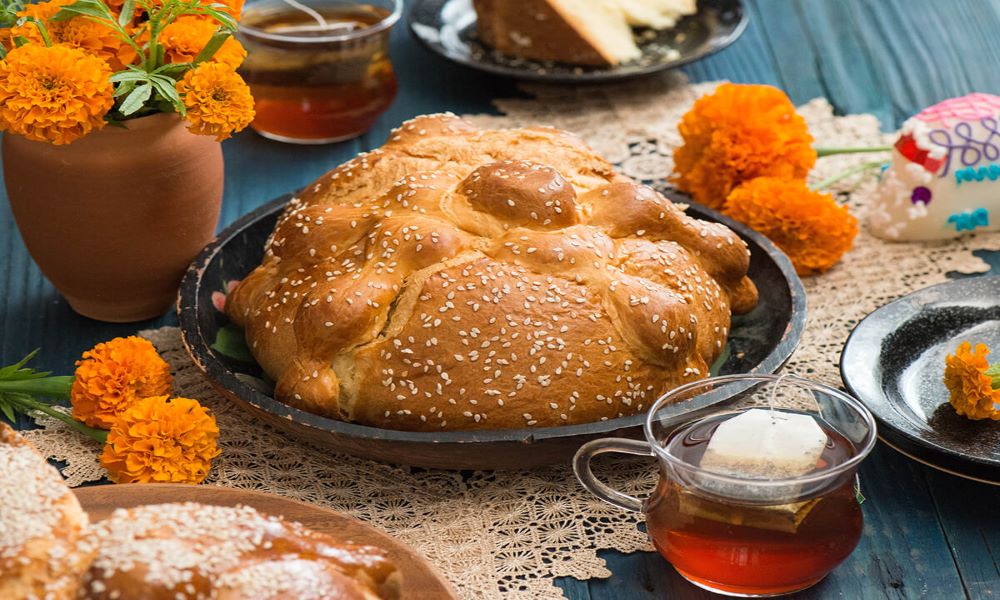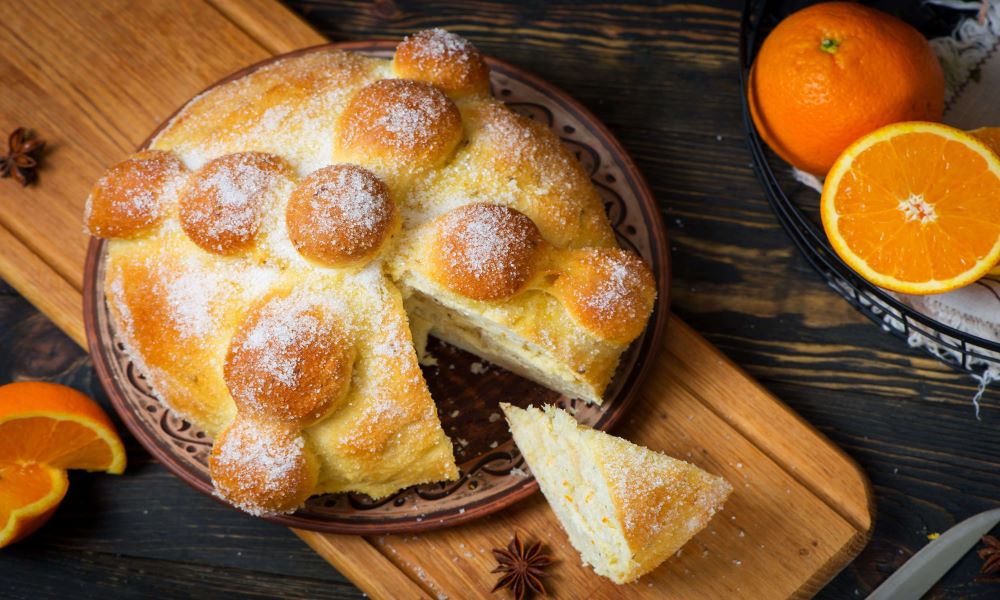Learn the story behind the Pan de Muerto.
Mexican sweet bread is one of the typical foods that we enjoy the most and that we can find in any part of Mexico, without exception. Its delicious aromas, flavors, shapes, and colors are a true gift for those who decide to taste it.
Traditionally, it is prepared at any time of the year, although there is some bread such as Pan de Muerto that can only be tasted on dates close to the Day of the Dead. In this blog, we tell you a little more about this traditional Mexican delicacy.
You may be interested in: Day of the Dead in Mexico.
History of the traditional pan de muerto.
Mexican traditions are characterized by having different representative elements that help us get closer to the culture and history of Mexico. In this case, pan de muerto is an element that dates back to pre-Hispanic times.
In pre-Columbian times, during the festivities of the Day of the Dead, it was customary to make huitlatamalli, a kind of flat tamale to which a little raw dough was added and painted with bright colors, this was accompanied with honey and consumed only on those dates.
During the time of the conquest, the Spaniards began to notice the different rituals and human sacrifices that the Mesoamerican cultures performed, totally rejecting these customs and creating a kind of red bread that symbolized the heart of the person, placing it on the altar of the dead and giving way to the traditional bread of the dead that we know.
What does the pan de muerto symbolize?
The bread of the dead is a representative figure of the Day of the Dead that acquires different meanings according to the culture and tradition of the place where this piece is found. Traditionally, we consume the circular bread of the dead with the so-called “bones” and the little ball in the center, which has a specific meaning.
The bun alludes to the cycle of life and death. The little ball in the center, located on top of the bun, alludes to the heart of the deceased (in some areas it is known as the skull) and finally, the cross alludes to the bones of the deceased.
When is pan de muerto eaten?
Pan de muerto is a typical delicacy of the Day of the Dead, so it is only eaten during this holiday on November 1st and 2nd, it can be found in bakeries between October and November. However, the popularity and demand for pan de muerto is so great that it is available from mid-September.
How many types of pan de muerto are there?
Because pan de muerto is more of a cultural symbol than a simple sweet bread, there are several types of this bread throughout Mexico. Whether we see the change reflected in the color, the ingredients, shape, and flavor. Here we list some of the types of pan de muerto that exist:
Traditional Pan de Muerto:
The traditional pan de muerto is the one we can find in every bakery in Mexico and has gained the most popularity over the years. This bread consists of a vanilla bread roll perfumed with orange essence, decorated with small crossed strips, and crowned with a small ball in the center, symbolizing the skull. It is sprinkled with sugar and accompanied by hot chocolate.
Sesame Pan de Muerto:
This variation is known as puff pastry and is usually saltier than the traditional pan de muerto. In this case, the bread is made just as we know it, with the little balls and bones, the difference is that it is not dipped in sugar or flavoring such as anise or orange. A light layer of egg yolk is added and sesame seeds are sprinkled on top.
Different variations in the Mexican Republic:
Throughout the length and breadth of the Mexican Republic, there are different variations of the traditional pan de muerto, these vary depending on the traditions and customs celebrated in each area. For example, in some parts of Mexico, it is customary to give a triangular shape to the bread of the dead, this can take different colors and sugar, or it is to make a skeleton made entirely of bread. 
You may be interested in: The Altar of the Dead.
Discover Mexico with Los Cinco Soles.
In Los Cinco Soles you can find different elements and souvenirs that exalt Mexican culture, from decorative items for the home, clothing, Mexican silver accessories, food, different gastronomic selections, and of course, natural Mexican vanilla.
Come and celebrate our traditions at Los Cinco Soles.



